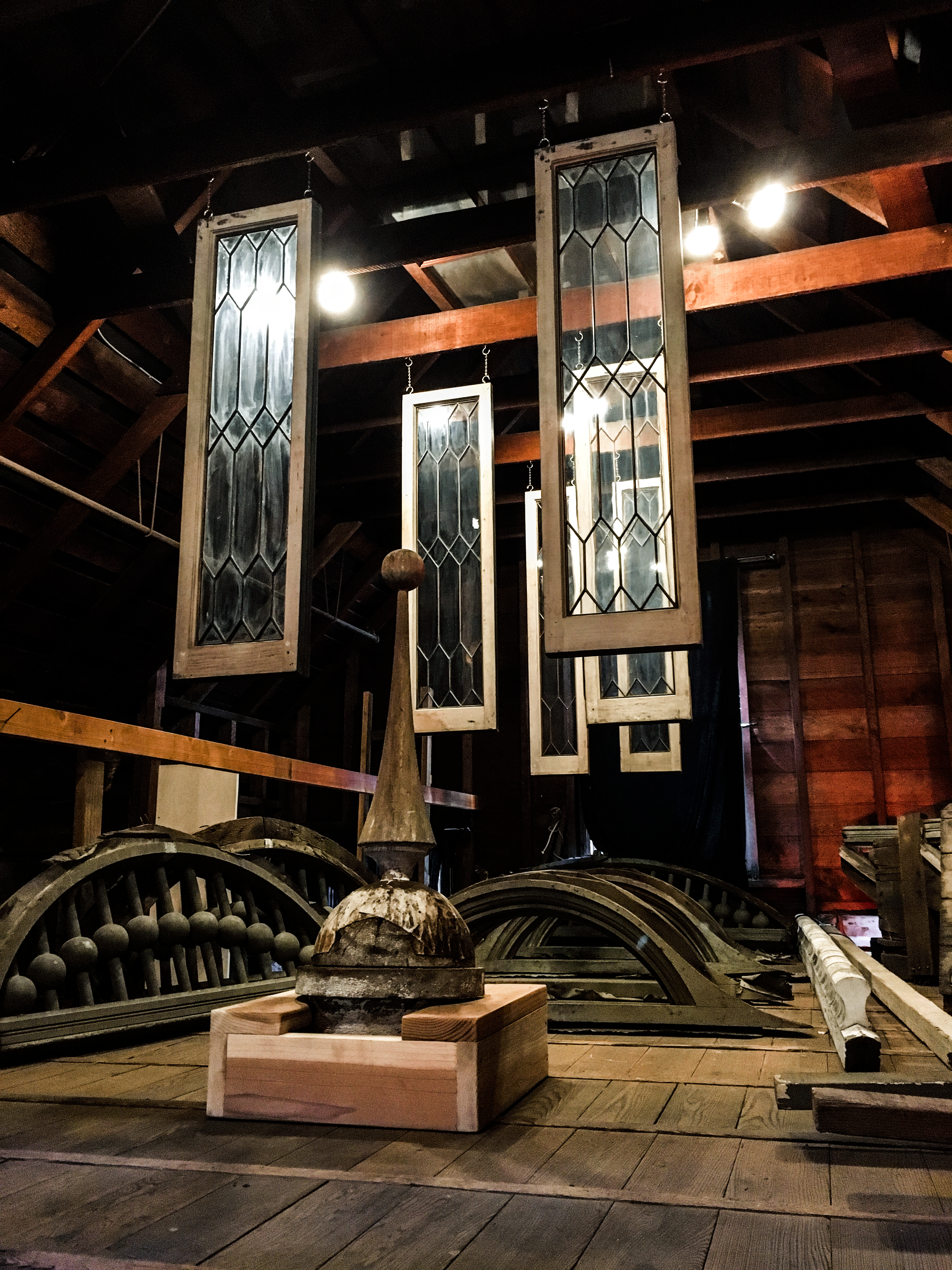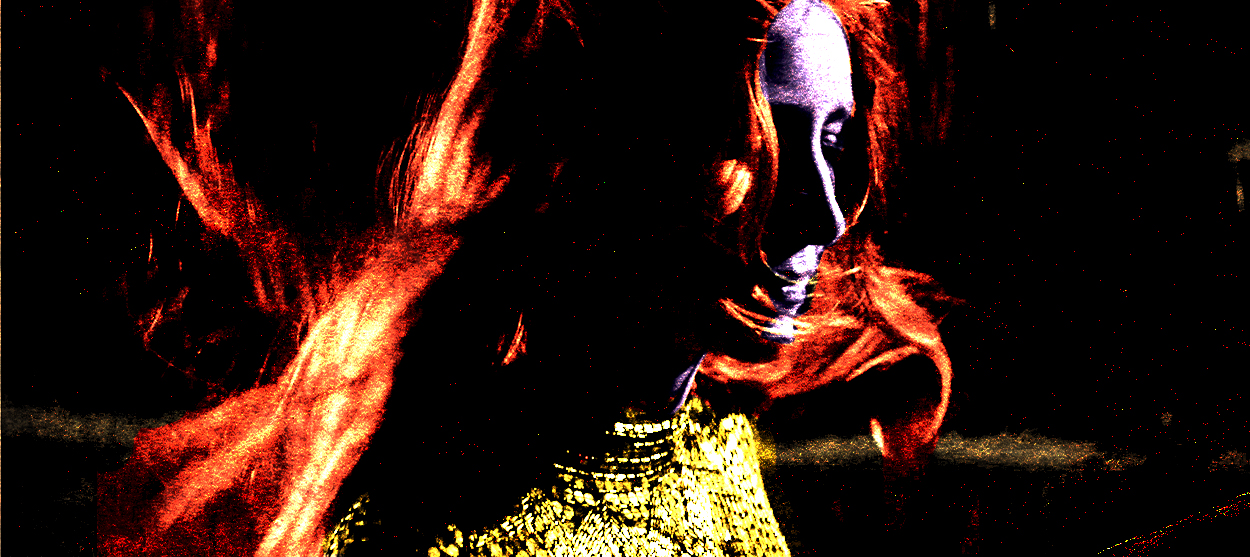The sexist myth of the Winchester Mystery House
Sarah Winchester was no Miss Haversham of the Wild West


Winchester, the gothic thriller about a woman supposedly haunted by the ghosts of people killed by the guns that made her fortune, came out Feb. 2 to lukewarm acclaim. The film is notable both for its mediocrity as horror and its surprising fealty to the historical details of the house in which it's set. The Winchester Mystery House is many things: a San Jose tourist attraction built around "the gun that won the West," the inspiration for Disneyland's Haunted House, and — more concretely — a sprawling collection of 160 rooms including 40 bedrooms, six kitchens, 2,000 doors, 47 stairways, and 47 fireplaces. Many of the rooms are unfinished. Some are exquisite. It's an architectural oddity, an unfinishable project whose creator no one quite understands.
Mostly, though, the Winchester Mystery House is a kind of Rorschach test of the people trying to tell its story. And on that score, Winchester actually fares better than most. I visited the house in preparation for the film, and what surprised me most was how bright and playful much of it felt. It's unsettling, no question: The legendary stairway to nowhere does exist. But there's more to the house than its spookiness, and that's thanks in part to its mysterious creator.
Still, for decades, the story told about the house was that Sarah Winchester (neé Pardee) — crazed by the loss of her husband and infant daughter and wracked with guilt over the thousands of deaths caused by the Winchester rifles that made her rich — started building the house in a kind of superstitious bid to placate the dead. There's a (probably apocryphal) story about a medium who told her that her family was cursed thanks to the provenance of its wealth. There was no escape, but she could go west and build a house for herself and the spirits. When construction stopped, her life would end.
The Week
Escape your echo chamber. Get the facts behind the news, plus analysis from multiple perspectives.

Sign up for The Week's Free Newsletters
From our morning news briefing to a weekly Good News Newsletter, get the best of The Week delivered directly to your inbox.
From our morning news briefing to a weekly Good News Newsletter, get the best of The Week delivered directly to your inbox.
In his book Ghostland, Colin Dickey tracks down the origins of this colorful story. Almost none of it can be corroborated. But the temptation to paint Sarah Winchester as pathological, irrational, and driven by guilt and ghosts is (in Dickey's view) not a particularly surprising response from neighbors who watched a woman supervise construction on her own house for 38 years. Winchester was enormously wealthy, clearly eccentric, and designing a pretty bizarre building at a time when women were not architects. Plus, even though she built a magnificent grand ballroom, she didn't really invite anyone over! It's hard to imagine a better recipe for stories like the one she eventually became: a Miss Haversham of the Wild West whose guilt over the American genocide against the Native Americans led her to a doomed project.
None of this quite scans, as Dickey points out. For one thing, Winchester's husband and daughter died 16 years apart; it's not quite the double-whammy the "grieving widow" story suggests. For another, Sarah Winchester was highly respected by her business associates — one described her as better than most men when it came to affairs of finance. She was also an unusually fair employer, paying her workers twice the mandated minimum wage, and furnishing the house with three elevators — including one for the servants. When the 1906 earthquake caused part of the house to collapse, she supervised the preservation of every possible thing and had them stored for use in future constructions. Seen this way, it's hard to imagine a less Havisham-like project. The house feels less dynamic and vital, like a really giant set of Lego's Winchester spent her life playing with. Here are some of those parts she never got around to reusing:

Or — depending on how you think of it — the house is a cool experiment in turning space into something like lace. The house is filled with unexpected sources of light and odd perspectives: The ceilings are peppered with skylights. Walls often become occasions for semi-transparency thanks to windows and doors with no clear function except to render the house a kind of wondrous architectural doily. Sometimes you see through multiple rooms at once:

Sometimes you can even see through multiple floors:
A free daily email with the biggest news stories of the day – and the best features from TheWeek.com


Many have puzzled over Winchester's decision to set expensive Tiffany windows in places where light wouldn't flow through them. (Sometimes windows that once faced the outdoors got trapped between rooms, like the two on the right in the photo below.)

But there are other places where the architecture itself seems to speckle and refract light.

So much for the mournful quality of Winchester's work (much of which felt, to me at least, like play).
As for the guilt over those killed by her father-in-law's company? In her biography of Winchester, Mary Jo Ignoffo writes that the idea of Winchester's "gun guilt" surfaced in the press as a possible motivation for her actions. Progressives were horrified by the carnage wrought by the repeating rifle and — since Winchester absolutely refused to answer any questions about her house, the Winchester Repeating Arms Company, or herself — they rather wanted this to be true:
Since she benefited from the repeater, she would also be considered responsible for it. It was as if she personified a conscience, one that was so guilt-racked over countless violent deaths that she suffered her way into madness in a burgeoning and ghost-infested mansion. The image of wandering souls of brutally killed cowboys and American Indians at the hands of settlers with repeaters provided lurid fodder for an already substantial hyperbole. If Winchester expected to live with her inheritance without mention of the rifle, she was sadly mistaken. Her aversion to publicity, to making a statement in her own defense, ensured that gun guilt became her persistent companion. Whether for her politics, her physical attributes, her religious practices, or her personal lifestyle, by the turn of the 20th century Sarah Winchester was considered an obsessive and superstitious dowager. She could have mitigated the gossip, but chose to remain silent. In the face of increasingly outlandish stories, she never discussed her connection to the Winchester Repeating Arms Company and she never answered questions about her large San José house. Even the more realistic columnist, Merle Gray, had to depend on "a close friend" of Winchester's, rather than the widow herself, for information. If Winchester had answered some questions, the rest of the story may have turned out differently. [Captive of the Labyrinth: Sarah L. Winchester, Heiress to the Rifle Fortune]
The film takes on the most lurid version of this myth. The story circulating is that Sarah Winchester (played by Helen Mirren) is insane, and a dissolute doctor named Eric Price (Jason Clarke) is approached by a member of the board and asked to evaluate her mental capacity. They want her off the board, and bribe him accordingly. Price, a broken widower-turned-lothario whose laudanum habit has him seeing blood dripping down the walls in his own home, agrees. He goes to Sarah Winchester's house, where things begin to go wrong for him.
It's a useful setup, since Price's habit makes it difficult for him to distinguish between his usual dope-fueled visions and the genuinely creepy things happening there. And this of course ends up being the point: Sarah Winchester — while confirming every salacious myth about guilt and ghosts — turns out to be absolutely sane. The ghosts are real, she feels deep remorse for their suffering, and has matter-of-factly compiled a dossier on every person ever slain by a Winchester.
Winchester has banned guns from her home (and tried to turn the company toward other endeavors, like roller skates — which the company did in fact produce). The film's explanation for the house is actually pretty interesting: Each room she builds is an exact replica of the room in which the tormented ghost died. Through these reenactments, they eventually find peace. Or don't, and stay locked up in various rooms that have been "sealed" with 13 nails.
The Winchester Mystery House is a kind of ghost rehab, in other words. And Sarah Winchester is their repentant and dedicated therapist.
It's a nifty conceit that rescues Winchester from the unhinged dowager that even the movie's poster conveys. The movie incorporates several factual aspects of the Winchester house, including the pervasiveness of the number 13. And when the ghost stuff starts to get really nasty, the 1906 earthquake hits — twice, just as it did historically.
The history the movie doesn't engage with is a little more puzzling: While the overwhelming majority of those felled by "the gun that won the West" were Native American, they aren't the angry ghosts in this story. Instead, the central villain-ghost is a Confederate soldier whose brothers were killed by the Henry rifle (which got some use during the Civil War, but not much — the government only bought 1,731 of them, and a few thousand were bought privately).
What creators Michael and Peter Spierig achieve is a reading of Sarah Winchester that accords her competence, responsibility, and purpose. Mirren's Sarah is a keen inventor and an interesting woman — or would be, if she weren't constantly dealing with competently produced but rather commonplace spooks. It's a fun and slightly silly movie (though the ending undoes much of what it appeared to be attempting). But I do hope more films take on this rich backstory.
Winchester is so often figured as a widow hiding inside a maze of her own making that I feel like we forget that the labyrinth in myth is the consummate creation of Daedalus, the greatest inventor. And that it might be worth seeing Sarah Winchester as having been in playful creative dialogue with him. I've offered lace as a possible inspiration for her architectural aesthetic, but there's a more likely one. Winchester decorated her house with stained-glass spiderwebs — arguably the ultimate feminized architectural design. Constantly read as sinister, it's also strong, sinewy, endlessly expandable, and partly transparent.

Lili Loofbourow is the culture critic at TheWeek.com. She's also a special correspondent for the Los Angeles Review of Books and an editor for Beyond Criticism, a Bloomsbury Academic series dedicated to formally experimental criticism. Her writing has appeared in a variety of venues including The Guardian, Salon, The New York Times Magazine, The New Republic, and Slate.
-
 Walter Isaacson's 'Elon Musk' can 'scarcely contain its subject'
Walter Isaacson's 'Elon Musk' can 'scarcely contain its subject'The latest biography on the elusive tech mogul is causing a stir among critics
-
 Welcome to the new TheWeek.com!
Welcome to the new TheWeek.com!The Explainer Please allow us to reintroduce ourselves
-
 The Oscars finale was a heartless disaster
The Oscars finale was a heartless disasterThe Explainer A calculated attempt at emotional manipulation goes very wrong
-
 Most awkward awards show ever?
Most awkward awards show ever?The Explainer The best, worst, and most shocking moments from a chaotic Golden Globes
-
 The possible silver lining to the Warner Bros. deal
The possible silver lining to the Warner Bros. dealThe Explainer Could what's terrible for theaters be good for creators?
-
 Jeffrey Wright is the new 'narrator voice'
Jeffrey Wright is the new 'narrator voice'The Explainer Move over, Sam Elliott and Morgan Freeman
-
 This week's literary events are the biggest award shows of 2020
This week's literary events are the biggest award shows of 2020feature So long, Oscar. Hello, Booker.
-
 What She Dies Tomorrow can teach us about our unshakable obsession with mortality
What She Dies Tomorrow can teach us about our unshakable obsession with mortalityThe Explainer This film isn't about the pandemic. But it can help viewers confront their fears about death.



